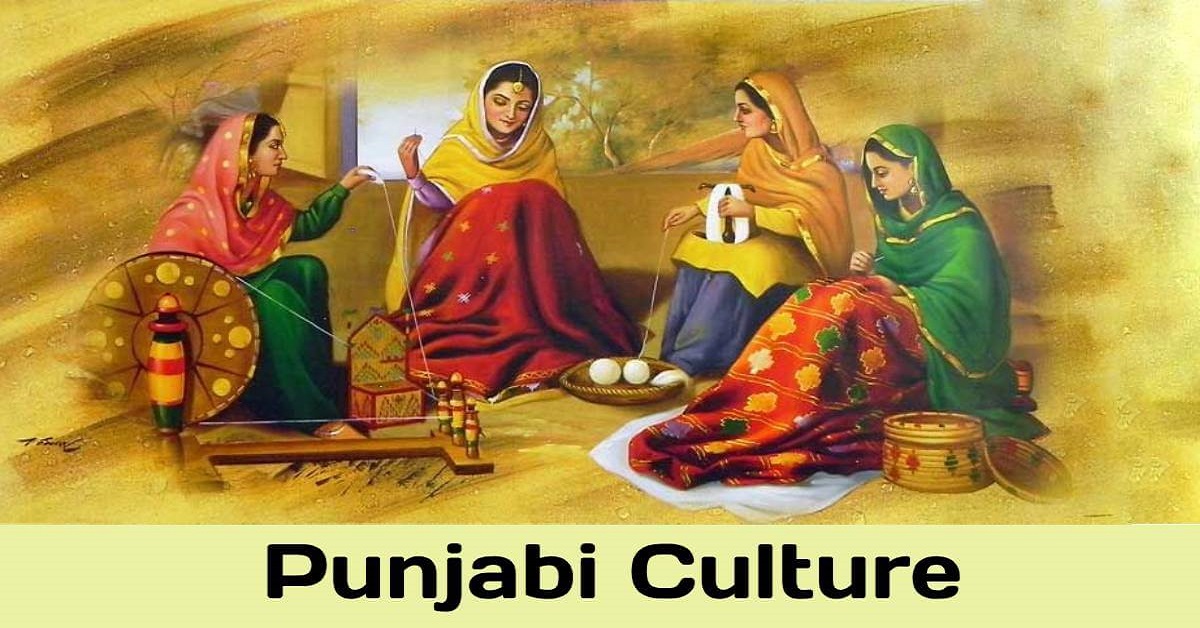TABLE OF CONTENT:
Introduction
The arrival of Islam and Sikhism
Partition of India and Pakistan
Exploring the Rich and Colorful Culture of Punjab
PUNJABI PEOPLE: THE OVERVIEW OF THEIR HISTORY
Introduction

Punjab is a region located in the northern part of the Indian subcontinent, divided between Pakistan and India. Punjabi people are native speakers of the Punjabi language and have a rich history dating back centuries. In this article, we will take a look at the history of the Punjabi people and their culture.
Early History
The earliest known civilization in the Punjab region dates back to the Indus Valley Civilization, which existed from 3300 BCE to 1300 BCE. The Punjab region has also been ruled by various empires throughout history, including the Mauryan Empire, the Gupta Empire, and the Mughal Empire.
The arrival of Islam and Sikhism
Islam arrived in the Punjab region during the 8th century when Arab traders began to settle in the area. The Mughal Empire, which ruled India from the 16th to the 19th century, was predominantly Muslim, and as a result, Islam spread throughout the Punjab region during this time.
In the 15th century, Guru Nanak, the founder of Sikhism, was born in the Punjab region. Sikhism spread rapidly throughout the Punjab region, and by the 18th century, the Sikh Empire was established, which ruled over a significant portion of the Indian subcontinent.
Partition of India and Pakistan
In 1947, when India gained independence from British colonial rule, the country was divided into two separate states: India and Pakistan. The Punjab region was also divided, with the western part becoming part of Pakistan, and the eastern part remaining in India. The partition of India and Pakistan resulted in the displacement of millions of people and led to widespread violence.
Punjabi Culture

Punjabi culture is rich and diverse, with a strong emphasis on family, hospitality, and community. Punjabi music, dance, and cuisine are popular throughout the world, and Punjabi festivals such as Baisakhi, Lohri, and Diwali are celebrated with great enthusiasm.
The Punjabi language is also an essential part of Punjabi culture and is spoken by millions of people worldwide. Punjabi literature, including poetry and prose, is renowned for its depth and richness.
Punjabi People: Exploring the Rich and Colorful Culture of Punjab
Punjab is a land of vibrant colors, mouth-watering cuisine, and warm-hearted people. The Punjabi people, who hail from the region of Punjab in India and Pakistan, are known for their zest for life, love of music, and commitment to family and community. In this article, we'll take a closer look at the culture of the Punjabi people and what makes it so unique.
History and Origins of the Punjabi People
The Punjabi people have a rich and complex history that dates back over 5,000 years. The region of Punjab, which means "land of five rivers," has been inhabited by various ethnic and linguistic groups throughout its history, including the ancient Indus Valley Civilization, the Aryan invaders, the Mughal Empire, and the British Raj.
Despite this diversity, the Punjabi people have developed a strong sense of cultural identity and pride. Punjabi is the most widely spoken language in Pakistan and is also spoken in India, Canada, the United States, and other parts of the world.
Religion and Festivals
The majority of Punjabi people practice Sikhism, a monotheistic religion that was founded in the 15th century by Guru Nanak Dev Ji. Sikhs believe in the equality of all people, regardless of their caste, race, or gender, and emphasize the importance of community service and living a moral and ethical life.
One of the most important festivals for Punjabi people is Vaisakhi, which is celebrated on April 13 or 14 every year. Vaisakhi commemorates the formation of the Khalsa, a community of baptized Sikhs, and is a time for prayer, feasting, and community gatherings. Other important festivals include Diwali, Holi, and Gurpurab, which celebrate the birth anniversaries of the ten Sikh Gurus.
Cuisine

Punjabi cuisine is famous for its rich and flavorful dishes, which often include butter, cream, and ghee. Some of the most popular Punjabi dishes include tandoori chicken, butter chicken, chole bhature, sarson ka saag, and makki di roti.
Punjabi food is also known for its use of spices, which include cumin, coriander, turmeric, and garam masala. Many Punjabi dishes are cooked in a tandoor, a traditional clay oven, which gives them a distinctive smoky flavor.
Music and Dance

Punjabi music and dance are an integral part of the culture and are enjoyed by people of all ages. Bhangra, a high-energy dance form that originated in Punjab, is one of the most popular dance styles. Bhangra is often accompanied by dhol, a double-headed drum, and is performed at weddings, festivals, and other special occasions.
Punjabi music is also known for its lively beats and catchy melodies. Some of the most popular Punjabi musicians include Gurdas Maan, Kuldeep Manak, and Surjit Bindrakhia.
Conclusion
Punjabi people have a rich history that spans centuries. From the early Indus Valley Civilization to the Mughal Empire to the Sikh Empire, the Punjabi people have played a significant role in shaping the history of the Indian subcontinent. Despite the challenges faced during the partition of India and Pakistan, Punjabi culture continues to thrive and is celebrated worldwide.


You must be logged in to post a comment.